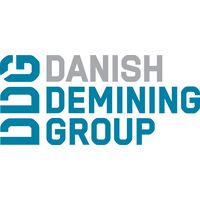At T4D…
We understand technology and how it can work for you
We offer specially tailored, affordable, quality and high-end tech solutions
Capacity Building
eLearning
Teach or learn at our virtual academy.
We can also host your courses or develop an eLearning platform for your institution from the ground up.
Mobile data collection
Are you planning to collect data using mobile devices? We can help you setup a mobile data collection platform.
We have extensive knowledge and experience working with ODK, KoBoToolbox, ona.io, SurveyCTO, CSPro, Magpi, Survey Monkey, Google Forms and others
Software Development
We design and implement custom software solutions and mobile apps to simplify your business problems. Some of our services include:
- Custom software development
- Web development
- eLearning platforms
- Mobile applications
- Ecommerce portals
- MIS solutions
Digital Marketing and Ecommerce
We are your consummate partner in Media Buying, SEO, Paid Advertising, Content Marketing, Product Launch Campaigns, Activation Campaigns, Sign-up Campaigns, Affiliate Marketing, Email Marketing, Social Media Marketing, SMS Marketing, Retarget Marketing, Domain Authority Improvement and Retarget Marketing
Research Services
Knowledge is the most important component in the decision making process. We can give you foot on the ground and help you ask the right questions the right way using the right technology. Our services include:
- Data Collection and Management
- Data Coding and Entry
- Data Analysis
- GIS and Mapping
ICT Equipment
We work directly with you to analyse your computer networks, assess the strengths and weaknesses of your IT infrastructure, and source the best computer equipment to meet your needs. Talk to us for:
- Computer hardware and peripheral equipment
- Computer network equipment
- Office computer furniture and fixtures such as Ergonomic workstations, monitor arms, keyboard trays, chairs, and more.
Enterprise Computing
Streamlining large-scale data requires large-scale software. We can help in procurement and implementation of the following:
- ERP Systems
- CRM Systems
- M&E Systems
- Project Management Systems
- Document Management Systems
- Microsoft 365
- MIS and others
SMS Solutions

Messaging
Send effective text communication to your customers when they need it. Our easy-to-use and reliable SMS solutions provide a wide variety of ways for you to add text messaging to your mobile and web applications.
Affiliated Websites
Our Clients























Our Core Values
Professionalism
Integrity
Commitment and Hard work
Continuous Learning and Improvement
Welcome to Tech for Development
We have consistently provided clients with effective solutions making technology an asset for them.









